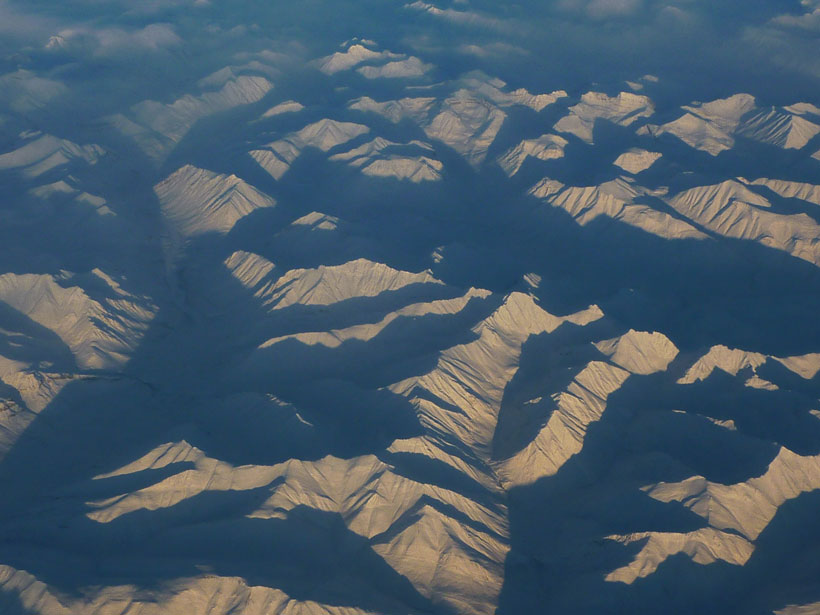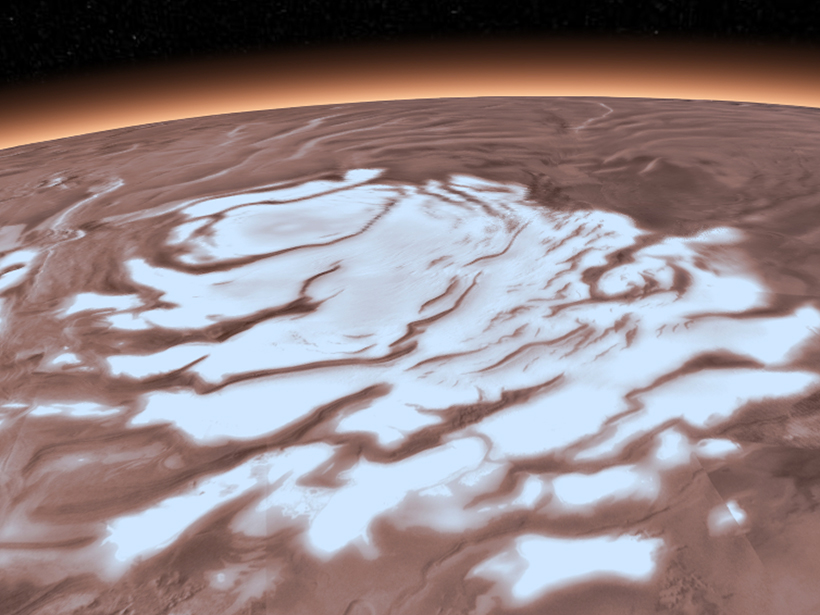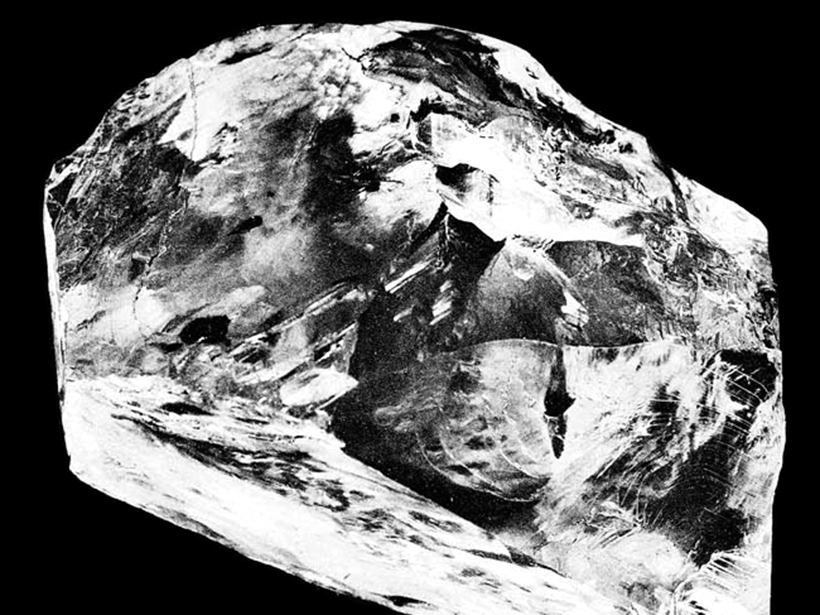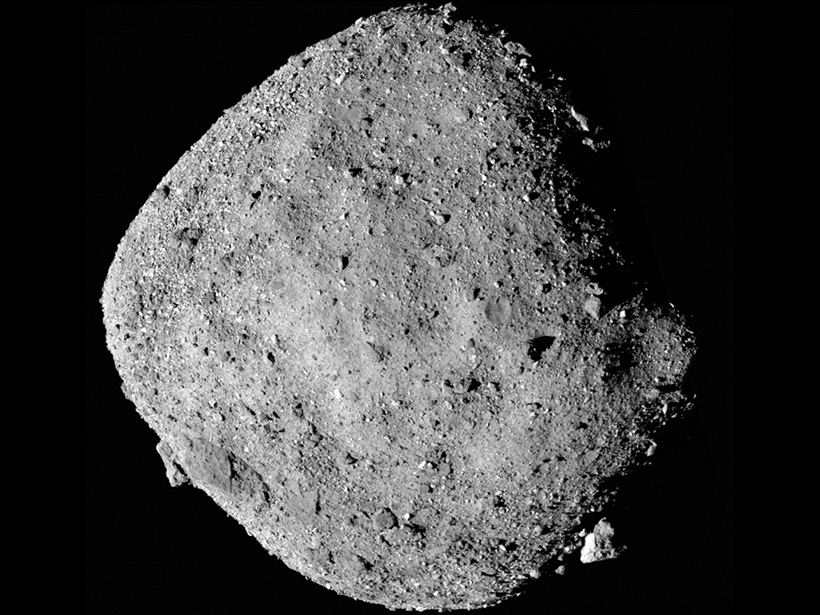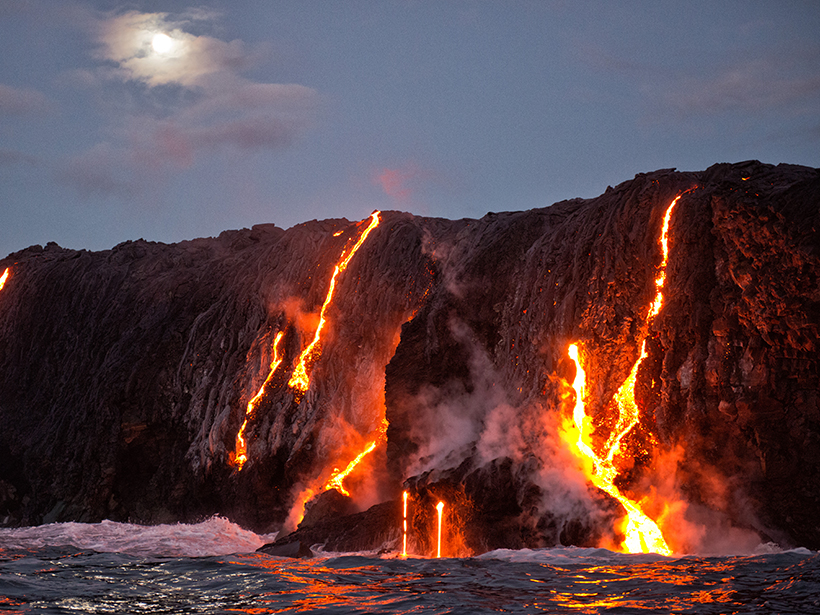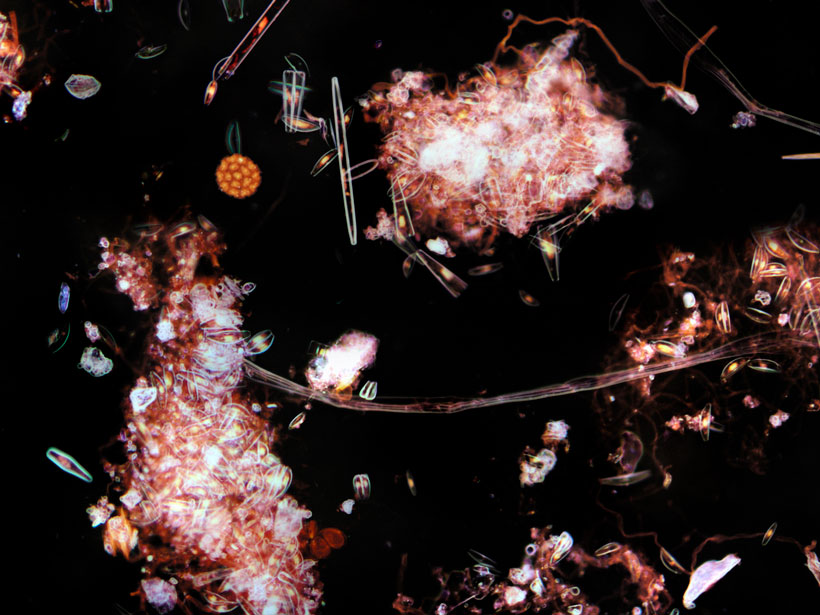A novel geophysical technique documents the existence of a “missing” fault, along which major displacement could have occurred during the Cretaceous on North America’s northwest margin.
Research Spotlights
Research spotlights are plain-language summaries of recent articles published in AGU’s suite of 24 journals.
Probing the Origin of a New Celestial Phenomenon
The first statistical study of STEVE events suggests that the appearance of these narrow ribbons of light is closely correlated with violent disturbances in Earth’s magnetosphere.
New Antenna Design Could Improve Satellite Communications
A novel antenna design promises to improve bandwidth and allow for better communication between Earth stations and satellites.
Local Heat Source Needed to Form Liquid Water Lake on Mars
Thermal modeling suggests that active magmatism in the past few hundred thousand years could account for the presence of a large lake previously hypothesized beneath the Red Planet’s southern ice cap.
Explaining the Genesis of Superdeep Diamonds
Real-time tracking during diamond anvil cell experiments indicates reaction rates may control the unusual depth distribution of the extremely rare diamonds that form deep within Earth’s mantle.
Scientists, Explorers Keen to Locate Water-Bearing Asteroids
Hydrated minerals on near-Earth asteroids offer both scientific revelations and economic incentives for companies looking to refuel satellites with material from nearby space.
Magnetic Anomalies on the Pacific Plate Reveal True Polar Wander
A new study rebuffs the standard approach to paleomagnetism and offers an updated methodology and new locations of paleomagnetic poles.
Forecasting Seismicity from Wastewater Disposal in Oklahoma
Mandated wastewater injection reductions in effect since 2016 are inadequate for preventing future, large-magnitude earthquakes in the state, according to a new induced seismicity model.
Oceanic “Pump” Sends Small Carbon Particles to Twilight Zone
Underwater gliders provide unprecedented, daily data that reveal new insights into how carbon gets from the atmosphere to the deep ocean.
What Do People Drink When They Think Their Tap Water Isn’t Safe?
An analysis of nationwide housing data shows that minority households disproportionately bear the multibillion-dollar economic burden that comes from believing their water is unsafe.

